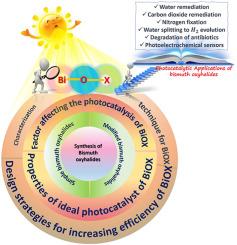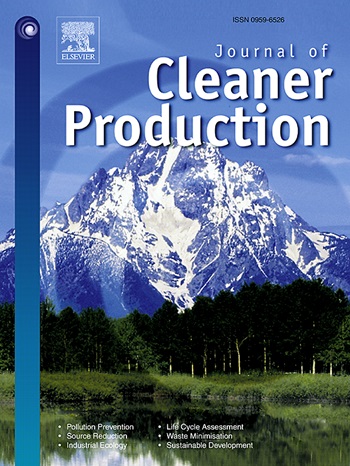Progress on synthesis, characterization and photocatalytic applications of bismuth oxyhalide based nanomaterials in cleaner environment and energy - A review
IF 9.7
1区 环境科学与生态学
Q1 ENGINEERING, ENVIRONMENTAL
引用次数: 0
Abstract
Bi based materials have been the subject of interest from past few years due to their peculiar, layered morphology and efficient band gap suitable for many applications notably photocatalysis. Photocatalysis being a high efficiency ecologically benign technology involves the use of light and a photocatalyst (semiconductor) for reactions to generate charge carriers involved in photocatalytic performance. Among all available photocatalysts, bismuth oxyhalides-based (BiOX, X = Cl, Br, I) nanomaterials with the available oxygen vacancies become a new trend in various applications i.e., water remediation, ammonia synthesis, hydrogen evolution and carbon dioxide reduction etc. Furthermore, now a days BiOX nanomaterials are also widely used to construct efficient photoelectrochemical (PEC) sensors used for various purposes etc. Thus, this review offers a contemporary summary of recent progress in surface modification through diverse design strategies, their impact on photocatalytic efficiency, and the wide array of applications via photocatalysis. Finally, we highlighted the challenges and future prospects by keeping in focus the advance applications. We aim to help researchers to design versatile but novel bismuth oxyhalide (BiOX) nanomaterials for a range of applications, and boost its photocatalytic efficiency, thereby advancing its effectiveness.

求助全文
约1分钟内获得全文
求助全文
来源期刊

Journal of Cleaner Production
环境科学-工程:环境
CiteScore
20.40
自引率
9.00%
发文量
4720
审稿时长
111 days
期刊介绍:
The Journal of Cleaner Production is an international, transdisciplinary journal that addresses and discusses theoretical and practical Cleaner Production, Environmental, and Sustainability issues. It aims to help societies become more sustainable by focusing on the concept of 'Cleaner Production', which aims at preventing waste production and increasing efficiencies in energy, water, resources, and human capital use. The journal serves as a platform for corporations, governments, education institutions, regions, and societies to engage in discussions and research related to Cleaner Production, environmental, and sustainability practices.
 求助内容:
求助内容: 应助结果提醒方式:
应助结果提醒方式:


